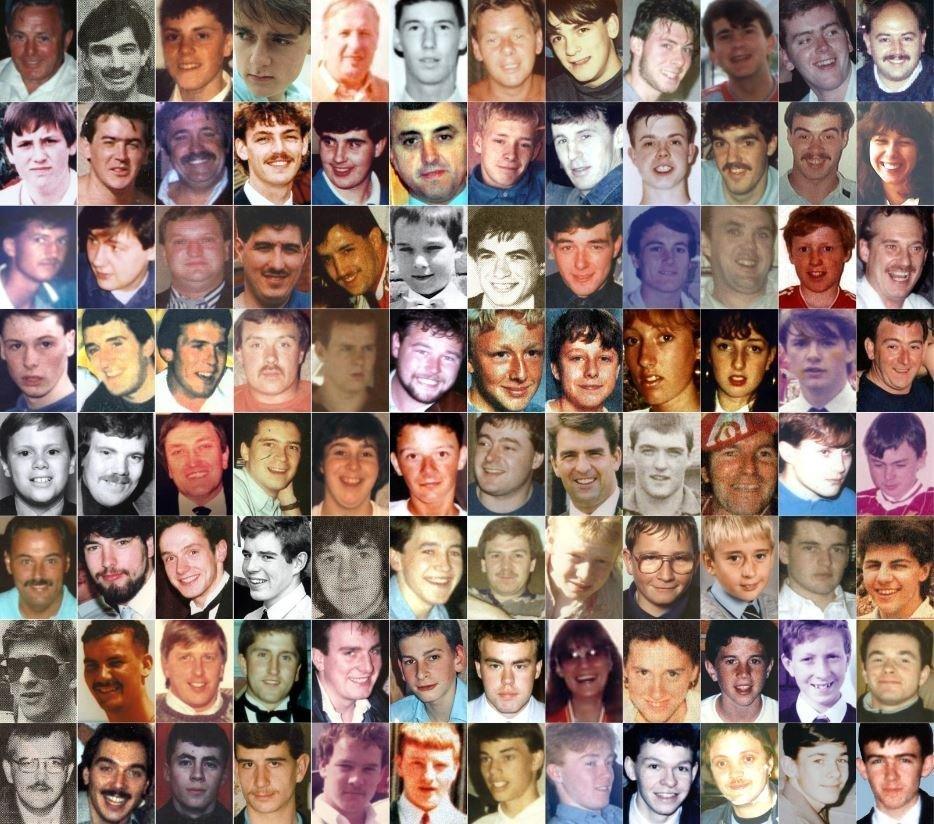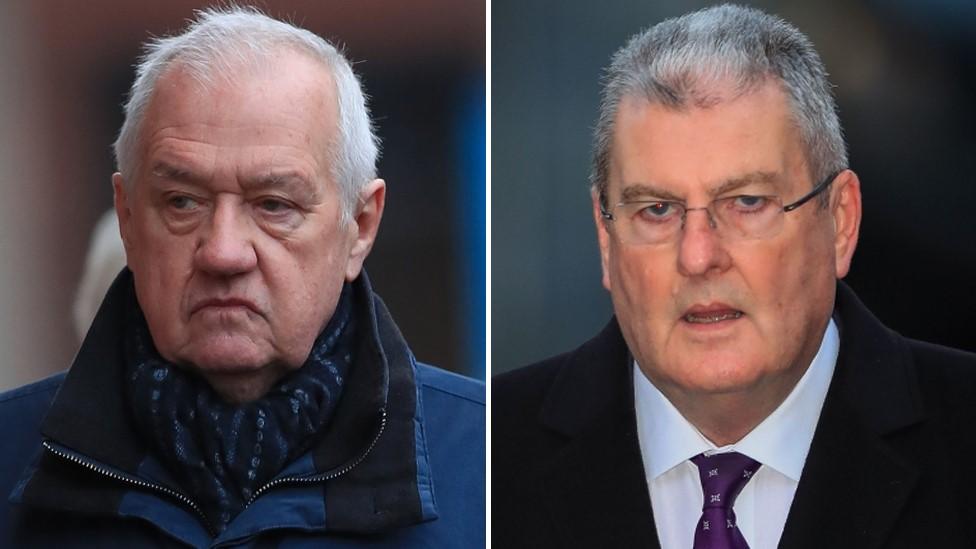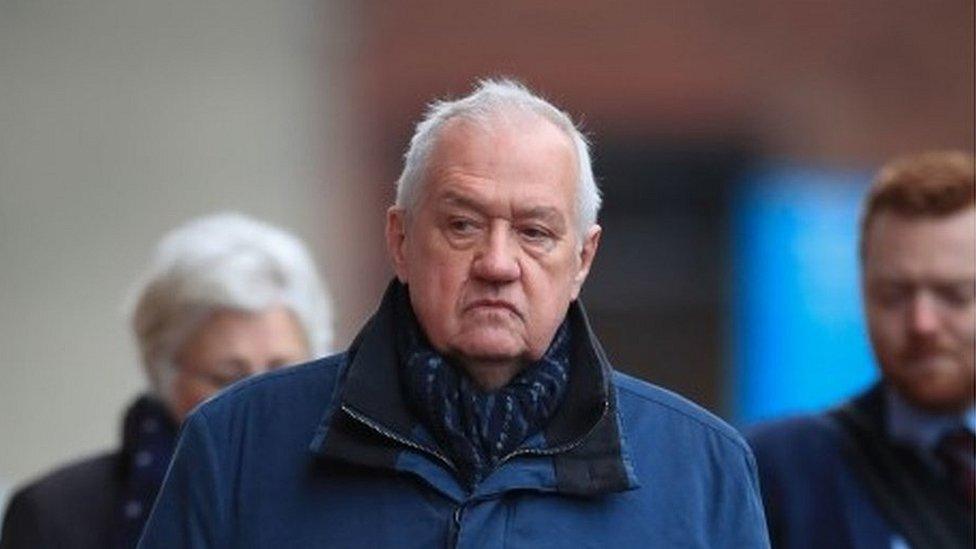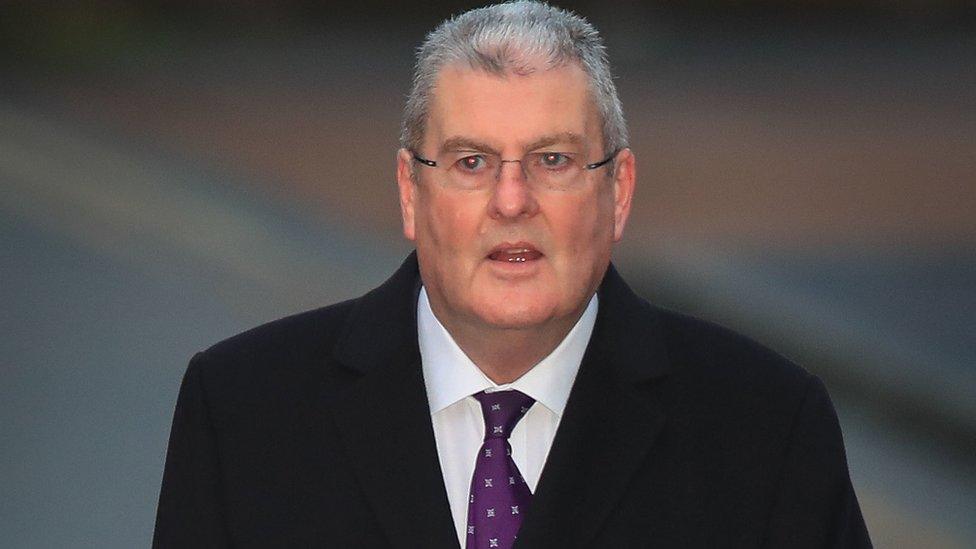Hillsborough trial: 'Not enough' turnstiles at stadium
- Published

Ninety-six people died in the 1989 Hillsborough disaster
There were not enough turnstiles for fans entering the terraces on the day of the Hillsborough disaster, a stadium safety expert has told a court.
Preston Crown Court heard at the time each turnstile should admit fans at a maximum rate of 750 people per hour.
Structural engineer John Cutlack said for all fans to get into the Leppings Lane terraces, turnstiles would need to let in 1,443 people an hour.
David Duckenfield, 74, denies the gross negligence manslaughter of 95 fans.
The former South Yorkshire Police chief superintendent, of Ferndown in Dorset, was the match commander at the FA Cup semi-final on 15 April 1989.
Sheffield Wednesday's ex-club secretary Graham Mackrell, 69, denies a charge related to the stadium safety certificate and a health and safety charge.

The 96 people who lost their lives in the Hillsborough disaster
The court heard there were seven turnstiles available for the 10,100 fans with tickets for the west terraces where the fatal crush happened.
Mr Cutlack told jurors: "I don't believe there were sufficient turnstiles for the North Stand or for the West Terrace."
The jury was told the Green Guide, which set out recommendations for stadium design, stated a ground should have enough turnstiles to get all fans into the ground at a maximum rate of 750 people per turnstile, per hour.
Mr Cutlack said: "In my experience, that was interpreted, by designers particularly, to mean it was expected that the turnstiles would need to be of sufficient numbers that everybody could get into the ground in an hour."
The court was told the turnstiles would have needed to let in 1,443 people an hour which was 30% higher than the 1,120 figure in the 1988 FA Cup semi-final as it had a different arrangement.
Mr Cutlack estimated there were between 1,296 and 1,430 spectators in pen three of the West Terrace three minutes after the 1989 match kicked off - but he said the safe capacity was 678.
He told the court many of the crush barriers in pens three and four of the terrace, including barriers which collapsed or were deformed in the crush, were about 60 years old.
"Somebody, I think from the Health and Safety Executive, found a rolled-up newspaper inside one of the top rails which dated back to 1931," Mr Cutlack added.

David Duckenfield (left) denies the gross negligence manslaughter and Graham Mackrell denies health and safety offences
Mr Cutlack told the court the layout of the ground meant there was a bottleneck outside the Leppings Lane end where a "large number of people would need to enter through quite a restricted space".
The court has heard on the day of the disaster an exit gate was opened to relieve crushing at the Leppings Lane turnstiles, allowing 2,600 fans to enter the stadium and make their way down the tunnel to the central pens.
Mr Duckenfield, 74, denies causing the deaths of 95 men, women and children at the match between Liverpool and Nottingham Forest.
Under the law at the time, there can be no prosecution for the 96th victim, Tony Bland, as he died more than a year and a day after the disaster.
The trial continues.
- Published31 January 2019

- Published30 January 2019

- Published29 January 2019

- Published28 January 2019

- Published25 January 2019

- Published24 January 2019

- Published23 January 2019
